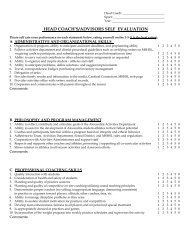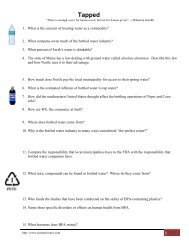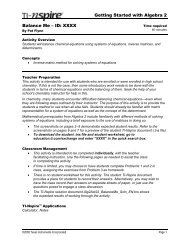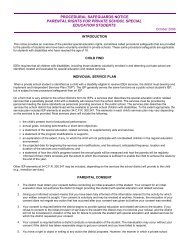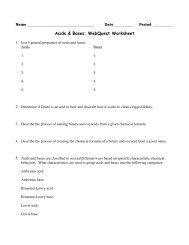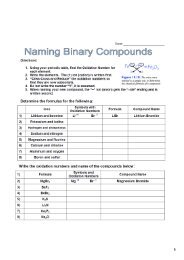Chapter 4 - Implementing a System of Research-based Interventions
Chapter 4 - Implementing a System of Research-based Interventions
Chapter 4 - Implementing a System of Research-based Interventions
You also want an ePaper? Increase the reach of your titles
YUMPU automatically turns print PDFs into web optimized ePapers that Google loves.
<strong>Chapter</strong> 4 <strong>Implementing</strong> a <strong>System</strong> <strong>of</strong> <strong>Research</strong>-Based <strong>Interventions</strong><br />
Figure 4-2. Level <strong>of</strong> Problem Analysis.<br />
Adapted from Christ, T. (2008), Best Practices in Problem Analysis. Best Practices in<br />
School Psychology. NASP.<br />
Primary Supports (Tier I) to Help Determine When to Intervene in<br />
Core Instruction<br />
In some instances, screening data may indicate that a significant number <strong>of</strong> students<br />
require additional instructional supports. Since resources may not be available to provide<br />
20 percent <strong>of</strong> a class or grade with additional instructional supports, a class-wide or gradelevel<br />
intervention may be warranted. After reviewing the screening data, devise appropriate<br />
standard protocol interventions to meet students’ needs. For class-wide intervention or a<br />
small-group intervention, use multiple sources <strong>of</strong> data to select the appropriate<br />
intervention.<br />
Note: Teams making eligibility determinations may want to incorporate data used to<br />
analyze and adjust core instruction to address exclusionary factors. These data may be<br />
available from Pr<strong>of</strong>essional Learning Community or grade-level team meetings or school<br />
improvement plans.<br />
Minnesota Department <strong>of</strong> Education Draft 4-10



